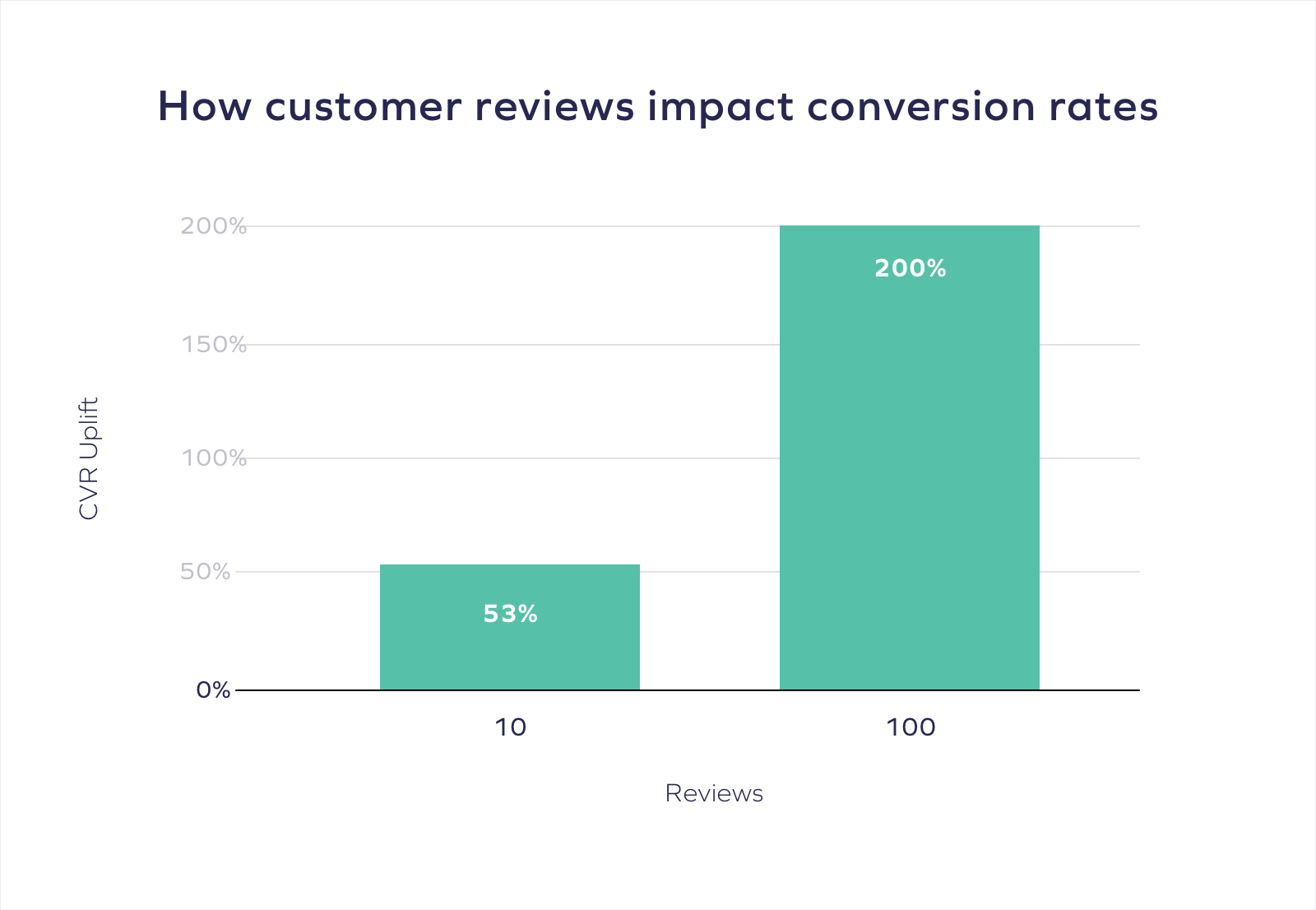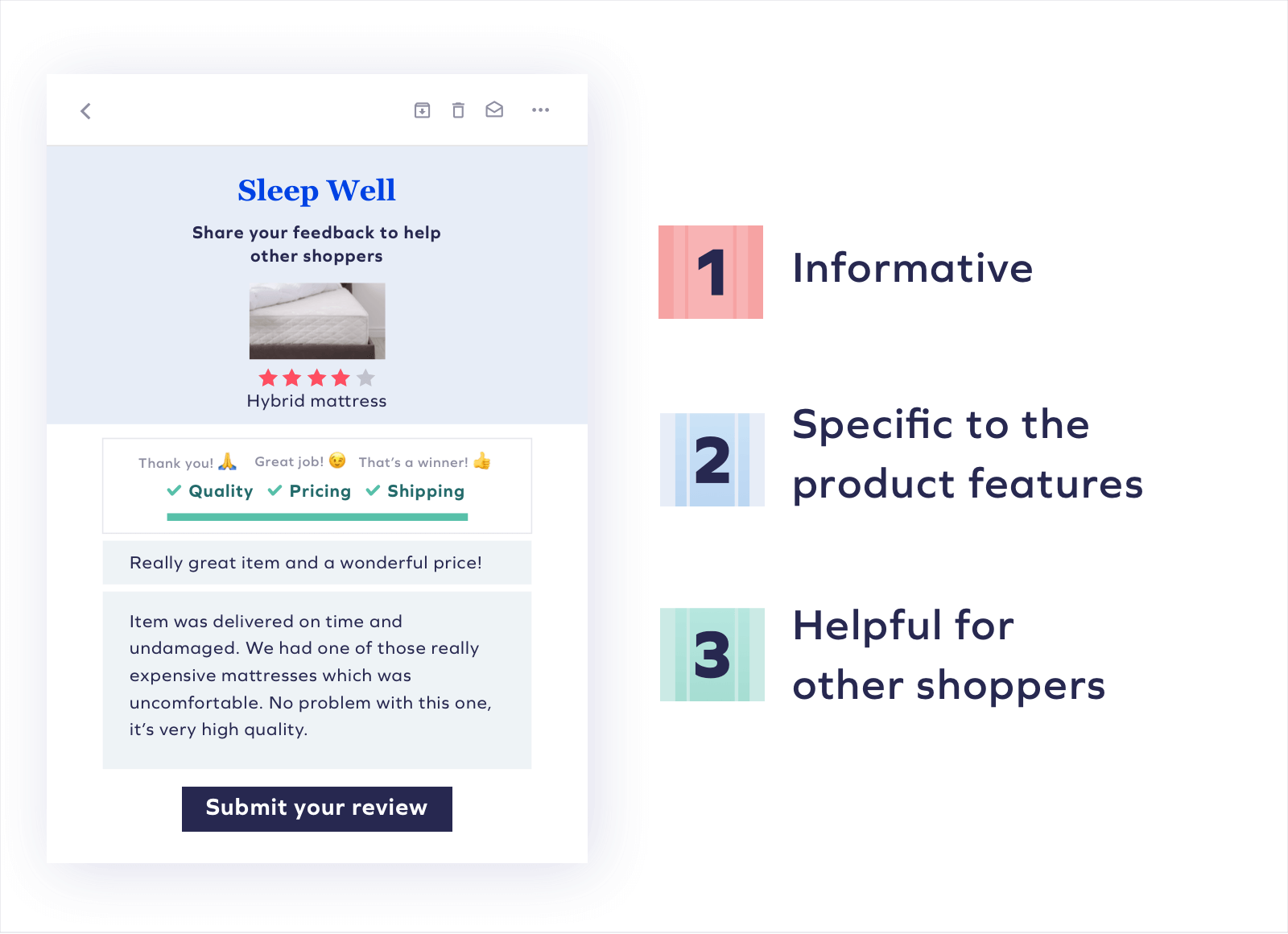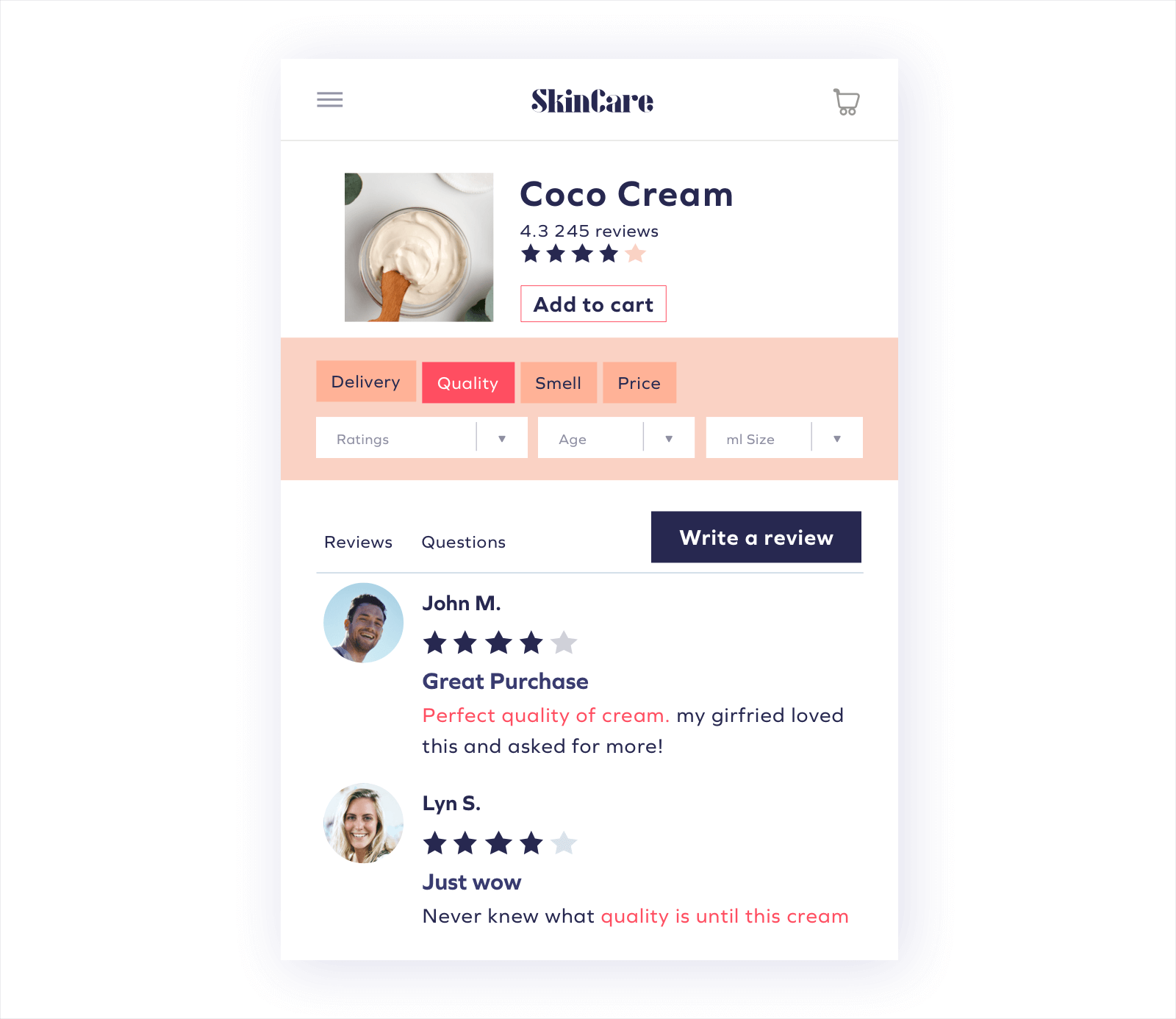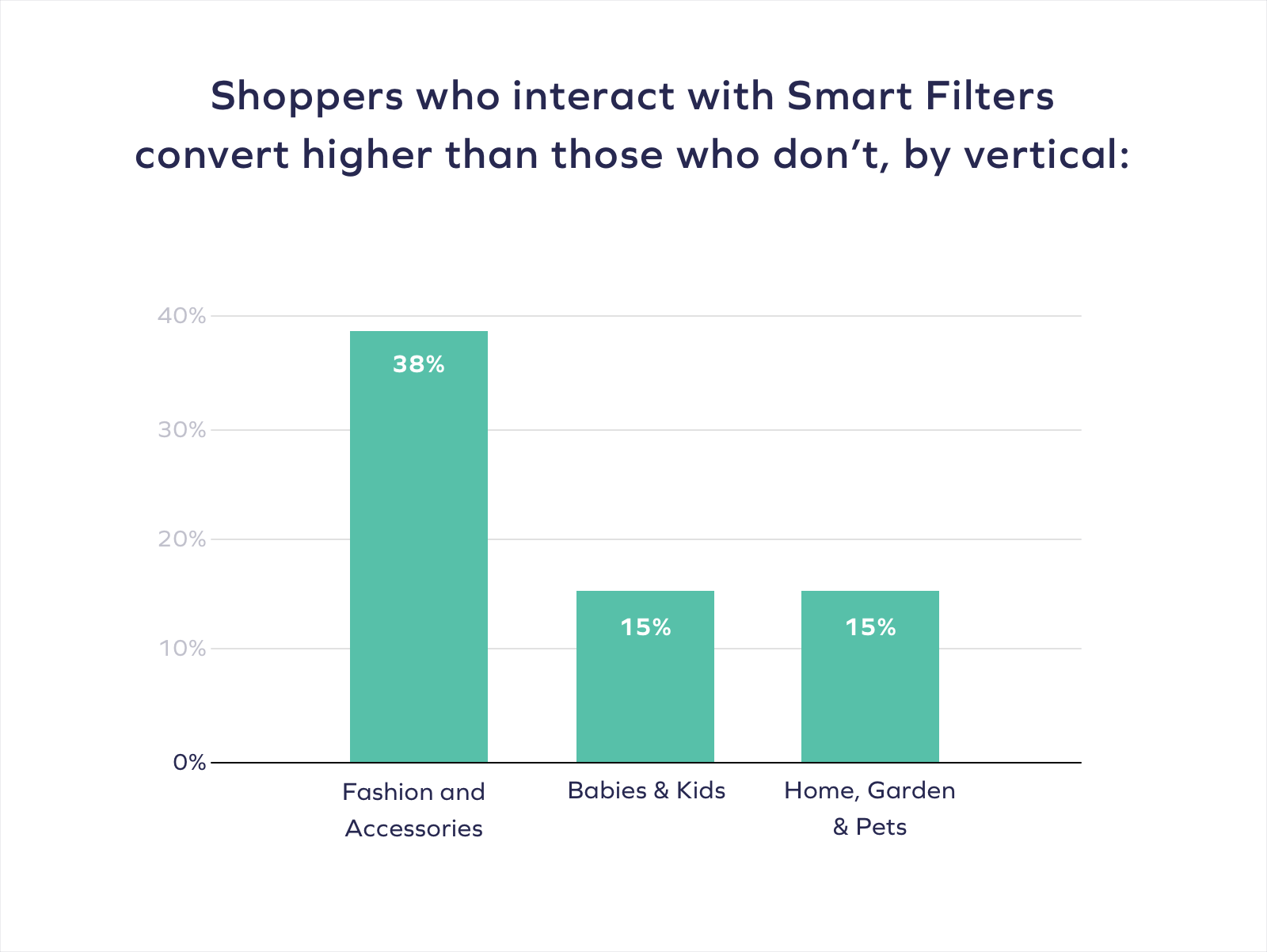Build Brand Credibility With Authentic Customer Reviews
A whopping 92% of consumers will hesitate to buy an item with no customer reviews. In this chapter, we’ll discuss the best ways to leverage this powerful social proof.
 Product Page Guide
Product Page Guide
A whopping 92% of consumers will hesitate to buy an item with no customer reviews. In this chapter, we’ll discuss the best ways to leverage this powerful social proof.
It’s no secret that reviews are a must for an eCommerce business. In fact, research shows that 92% of consumers will hesitate to buy an item that doesn’t have customer feedback. It’s not enough just to have reviews, though; it’s important to know how to best collect them and use them to actually convert shoppers.
In this chapter, we’ll discuss the best ways to leverage this powerful social proof to boost brand trust, and, more importantly, conversion.
Customer reviews can help your brand build trust and improve ROI, but there’s a caveat: they have to be authentic. Consumers are savvy, and they can spot fake reviews a mile away. Plus, if all they see is 5-star reviews on a product, they get suspicious.
It can be tempting for brands to pick and choose which reviews they display, choosing only the best, but doing so can have a negative impact for both the brand and the customer. Learning how to leverage both good and bad reviews — plus the ones that are somewhere in the middle — can help your brand use this powerful social proof to improve the customer experience and grow loyalty.
There are a few reasons why you should publish your negative reviews, including:

Authenticity in reviews doesn’t mean you have to publish reviews that are vulgar and abusive, or ones that you suspect are fake reviews coming from a competitor. But being transparent about your negative reviews — and most importantly, publicly responding to them — can help your brand seem more trustworthy, and help customers make more informed decisions.
eCommerce is a crowded, competitive field, and even more so as brick-and-mortar brands transition online. The best way to make your brand and products stand out is through the authentic, honest voices of your happy customers. But how do you get them to leave the “right” reviews?
First, let’s discuss what we mean by “right” reviews. We’re not necessarily talking about overwhelmingly positive feedback. Instead, we’re talking about reviews that are informative, specific to the product features, and helpful for other shoppers.
The right reviews are ones that are:

The good news is, customers overwhelmingly want to write reviews. As a brand, you just need to make it easy for them. Here are some strategies for collecting feedback from your customers.
This one may seem like a no-brainer, but so many brands forget this important step, assuming that customers will just come back to their store to leave a review once they’ve had a chance to use the item they purchased (spoiler: they won’t). After a customer receives a product, reach out to them and suggest they write a review.
Soliciting reviews can be done via email or text—if you know the customer’s preferred method of communication, that’s what you should use. Yotpo’s Automated Review Requests, SMS Review Requests, and Manual Review Requests give brands easy-to-use tools for requesting reviews. You can read more tips about how to ask for reviews here.
If your customers are going to leave reviews, they’re more likely to do it when they receive the prompt from you. That may be while they’re in line at the grocery store or at their desk at work. Make it easy for them to leave a review no matter what platform or device you’re using, by ensuring a mobile-friendly experience. 56% of Yotpo reviews come from mobile, so it’s important to consider.
What does mobile-friendly mean when it comes to reviews? Keep it simple. Don’t force them to log in, or navigate through multiple pages. Make the process as easy as possible, and keep the scrolling to a minimum.
According to Yotpo research, review response rates jump by almost 20% between 1pm and 3 pm — probably because many people are getting back to their desks after lunch and catching up on email. But that doesn’t mean you should go all-in on a specific time.
For example, stay-at-home parents have different daytime availability than office workers. It’s important to consider who your target audience is and when their windows are, and then test the timing of your messages to nail down what time is most effective for your particular customers.
The more detailed the customer reviews, the more helpful they’ll be to those who are reading them. Instead of an open-ended review request, asking customers specific questions can help you to solicit reviews that are higher in quality.
Tools like Yotpo’s Smart Prompts and Custom Questions can help you collect detailed information on things like fit, ease of use, or quality by asking multiple choice questions or suggesting topics.
Having high-quality, detailed reviews on your product pages is the best marketing tool for your business. Not only does it offer social proof, but the information could lead undecided consumers to conversion.
Text reviews are great (and necessary), but visual UGC like photos or videos will help shoppers to see how other customers use and enjoy your products. You can incentivize customers to leave visual reviews with special discounts, loyalty points, or other perks. The more you can help consumers visualize how your product will fit into their life, the easier it will be to convert them. For more information about visual UGC, read our chapter about building trust with social proof.
We’ve discussed how more reviews means more conversions, but how does a customer sort through all of them to find the information they need? If you have 100s of reviews for a product (lucky you!), a consumer isn’t going to read every single one, and may miss the one message that would lead them to checkout. That’s why having a way to sort and organize your reviews is so important.
Our stats show that only 5% of customers move on to the second page of reviews in order to find what they’re looking for. If you want to make sure customers see the reviews that are most likely to lead to a purchase, you need smart tools, like Yotpo Focus. This tool consists of two AI-powered widgets, Review Highlights and Smart Filters, to let customers filter reviews by topic and showcase your highest converting reviews.

Review Highlights uses sentiment analysis to scan each review and break it into sentences in order to detect the most positive snippets from your best product reviews. The top sentences are automatically selected according to their positive sentiment, number of topics mentioned, and their recency. Then, the best snippets from your top product reviews are showcased in a highly visible display.
Smart Filters uses natural language processing to identify the most popular and high-converting topics mentioned by buyers in product reviews, and showcases them as filters above the review widget. The machine learning technology takes into account customer engagement with the widget to continually optimize the topics presented in order to maximize conversion.
With AI-powered tools, you can ensure that shoppers see the most relevant, impactful reviews for your product. And the best thing about AI is that it’s always learning and improving, so the longer you use it, the more it will drive conversion. In fact, our data shows that shoppers who interact with Smart Filters, for example, convert at a higher rate than those who don’t.

Customer reviews are a powerful way to persuade consumers to buy your products. Make sure you’re leveraging yours for maximum conversion, so they can do your marketing for you.
“Yotpo is a fundamental part of our recommended tech stack.”
 Laura Doonin, Commercial Director
Laura Doonin, Commercial Director








